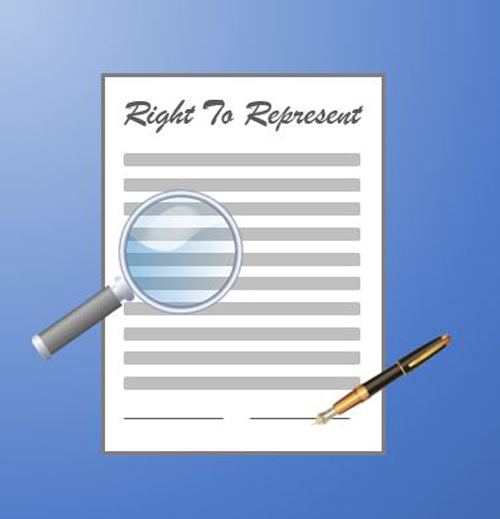Over the last few months, we have received multiple questions regarding Right to Represent (RTR) documents. We hope that this article sheds some light on what they are and how they benefit everyone involved.
The staffing and recruitment sector is evolving and moving more toward automation. Many of the new processes and procedures that companies use today seek to provide a system to track and verify applicants for employment from any source. Hiring companies today can receive candidates from myriad sources including: recruiters, job postings, referrals, social media, or direct applicants through their own career portal. As you can imagine, it can be huge undertaking just to quantify where all the applicants come from and easy for your resume to be lost in the shuffle.
What is a Right to Represent (RTR)?
Some people refer to RTRs as documents, forms, or even contracts. An RTR is, in simplest terms, a contract between a candidate and a recruitment agency which tells the hiring company that the recruiter has found a candidate suitable for the role and that the candidate agrees to be represented for a specific opportunity by the recruiter.
Why Use an RTR?
Good recruiters fully vet candidates before they send them to a client and the client knows when they receive a candidate from a trusted recruiter the candidate will match their needs – these candidates get the client’s attention first. An RTR is part of that quality process for the client and helps insure candidates are submitted for jobs that are a good match for them and that the client will take the time to look at their profile.
Some hiring companies require RTRs for submission of candidates by a third party to make sure candidates are aware of the position they are being presented for and that they agree to the presentation. This is done to eliminate what recruiters call a “Blind Submission” when a recruiter pulls your resume or contact information and submits it to the client directly without your knowledge or consent.
What happens if you don’t sign an RTR?
Many recruitment firms only use RTRs when required by their clients. For others, it is a standard part of the screening process. If a recruiter requests that you sign an RTR and you decide not to do so, it is a significant red flag for the recruiter and they are less likely to submit your information to their client. If the hiring company has an RTR requirement you will not be considered without one.
What happens if I sign multiple RTRs?
If a candidate signs an RTR for the same company and position with multiple recruitment firms and the company discovers this, the candidate is typically removed from the applicant pool. Companies, as well as quality recruiters, strive for integrity in their process and in their candidates. Sometimes a candidate might be contacted about the same position from a different recruitment firm after previously executing an RTR. Competition in the marketplace is a good thing but you should contact the recruiter you signed the RTR with in the first place. Companies will post and repost positions as they expire or with slight adjustments to the description. Once you have been submitted to a company under a RTR, your best bet is always to see if that recruiter can get you exposure the new or related opportunity.
When shouldn’t you sign an RTR?
If you ever find yourself in any one of the situations listed below and your internal warning signals start to blink, you should not sign the RTR.
- If a recruiter ever asks you to sign an RTR without disclosing the company name
- If the position description is not listed or attempts to be all-encompassing
- (ie. “any IT position” or “any sales job”)
- If the time to represent listed is longer than one year
- If you don’t trust the recruiter
Some candidates will claim that they refuse to sign RTRs because recruiters use them as a tool to “hold them out” of contention for a competitive position. This theory is clearly not the norm for professional staffing and recruitment agencies. Legitimate recruiters will sometimes submit multiple candidates for the same position to increase their success odds.
A Right To Represent can be valuable to candidates, recruiters and hiring companies. The use of RTRs is increasing and we expect that trend to continue. Talk with your recruiter about the RTR, trust your instincts and ask questions if something does not seem right to you.

